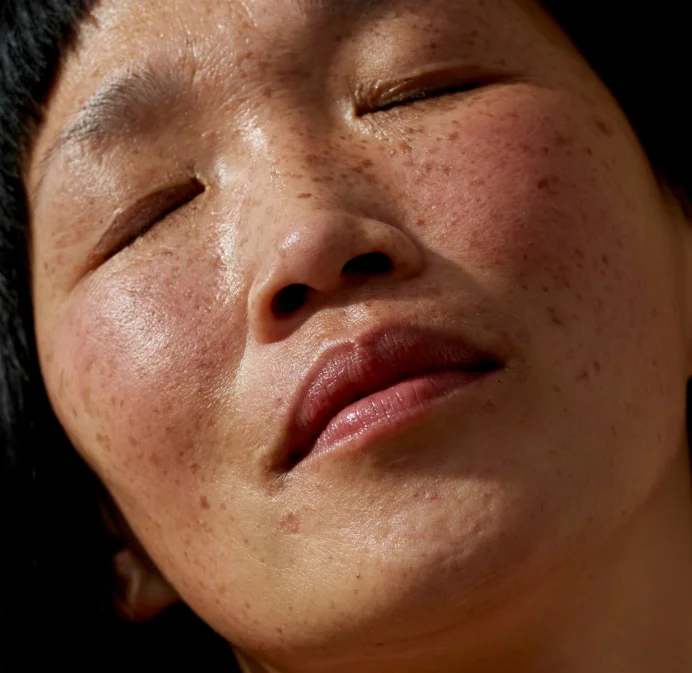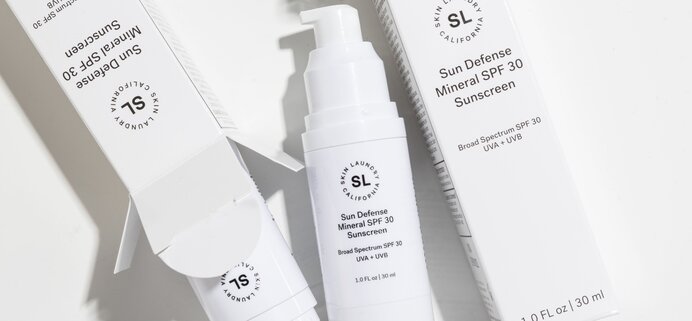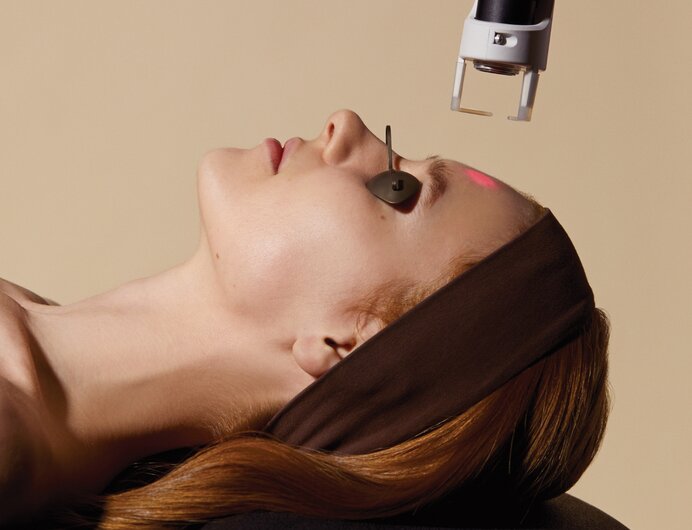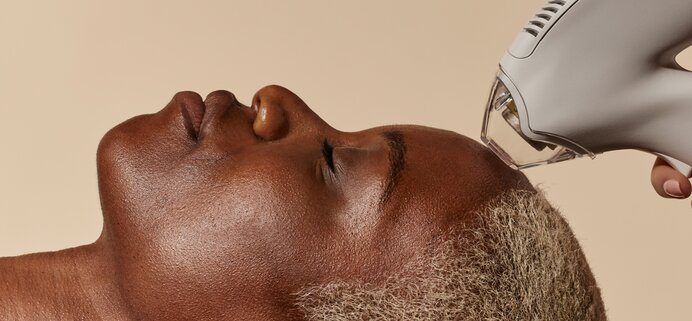
DOCTOR'S NOTE
How to Reverse Sun-Damaged Skin
A dermatologist weighs in on the effects of sun exposure on the skin, and how to repair and even reverse UV damage.
When it comes to skin health, there is one thing the experts all agree on: Sun exposure is the number one cause of skin damage and premature aging. While a broad-spectrum sunscreen, SPF 30 or higher, applied regularly, can help protect the skin from UVA and UVB rays, no sunscreen can block UV radiation entirely, nor can we completely avoid sunlight.
“Even short-term sun exposure can cause tanning, burning or blistering of the skin,” says Dr Roberta Del Campo, board-certified dermatologist and Skin Laundry Chief Medical Officer. “Long-term sun exposure, on the other hand, can lead to a much more critical list of consequences including an increase in the risk of skin cancers, damage to our skin cells, a breakdown of collagen which leads to fine lines and wrinkles, sunspots, dilated blood vessels and rough skin texture.”
While sun damage affects the skin both on a surface and cellular level, the good news is there are topical products and in-office treatments that can help reverse the effects of UV exposure. Read on for our comprehensive guide to treating sun damage from the inside out with Dr Del Campo.

What is sun damage?
Sun damage is the result of direct and indirect exposure to the sun. Direct exposure occurs when you’re outdoors, while indirect exposure happens when you’re in a shaded area or even indoors as the sun’s rays can reflect off of surfaces and penetrate through windows. You are not protected from the sun in the shade, your car, an airplane or even inside your house.
Immediate effects of exposure to UV rays are tanning, sunburn, redness, rashes, dryness and dehydrated skin. Cumulative effects include freckles, pigmentation like melasma and photoaging, which results in wrinkles and fine lines due to loss of skin elasticity and thick, leathery skin.
On a cellular level, UVA and UVB rays cause collagen to break down, allow for the formation of free radicals and damage DNA within the skin cells by inducing mutations.
A common misconception is that sun damage is limited to the surface of the skin. In fact, it goes much deeper.
How does sun damage show up on the surface of the skin?
"Sun damage shows up on the skin in a number of ways," says Del Campo. "Because UV damage causes collagen and elastin to break down, it makes the skin look thin and wrinkled. Additionally, sun exposure can cause the skin to develop sunspots and dilated blood vessels. Sun damage can also lead to a rough, almost cobblestone-like appearance and texture to the skin, making the skin rough to the touch."
How does sun exposure damage the skin on a cellular level?
"A common misconception is that sun damage is limited to the surface of the skin," says Del Campo". "In fact, sun damage goes much deeper than what we can see with the naked eye. When UV rays hit the skin, they cause damage to our skin cells, the keratinocytes and melanocytes. This can damage the DNA by causing those cells to replicate in a way that can lead to skin cancer. It also can break down collagen, so it can interfere with the healthy structure of our skin, which ultimately is going to negatively affect the quality of our skin health."
New studies show that the daily use of sun protection as well as topical antioxidants can potentially reverse sun damage.
What is the best way to prevent sun damage?
"Apply a mineral-based sunblock formulated with zinc oxide or titanium dioxide and limit your sun exposure - I recommend no more than ten minutes of direct sun exposure without sun protection," says Del Campo. "For an extra level of protection, I also recommend UV clothing and hats. UVA rays are strong enough to come through window glass, so we are exposed to more sun than we think. Additionally, it is imperative to reapply sunblock every two hours at a minimum, especially if you are sweating or engaging in water activities."

Can you reverse sun damage?
"Interestingly, yes. New studies show that the daily use of sun protection as well as topical antioxidants can potentially reverse sun damage, help to stop the replication of damaged cells and promote healthier skin," Del Campo explains. "Energy-based devices, like those used in Skin Laundry’s Laser and Resurfacing treatments, can also remove some of that sun damage and promote new, healthy collagen and elastin and essentially stimulate a repair process on a cellular level."
What are the best ingredients for reversing sun damage?
1. Niacinamide: This ingredient, found in our Hyaluronic Acid Serum, acts as an antioxidant and anti-inflammatory, decreasing hyperpigmentation, reducing fine lines and wrinkles, calming redness and improving skin elasticity.
2. Vitamin A: This ingredient, also known as Retinol, boosts cellular turnover and increases collagen production to improve the appearance of fine lines and wrinkles, skin texture and tone, and reverses damage caused by UV radiation.
3. Vitamin C: This powerhouse antioxidant provides protection against UV-induced photodamage, boosts collagen formation, promoting skin firmness and elasticity and brightens discoloration caused by UV exposure.

How does the Skin Laundry Signature Laser Facial help to reverse sun damage?
"Skin Laundry’s Signature Laser Facial helps break down some of the excess pigmentation that we see from sun damage by helping the body increase cell turnover and breaking down excess pigmentation," says Del Campo. "It can also help to target unsightly blood vessels caused by sun damage, which reduces some of the redness and ruddiness caused by UV exposure, and increases collagen production to prevent some of the fine lines and wrinkles that are the result of collagen breakdown."

How does the Skin Laundry Resurfacing Facial help to reverse sun damage?
"The Resurfacing Facial uses nanofractional radio frequency (RF) technology, which rapidly transfers heat to the skin and creates tiny, little controlled wounds in the skin that kick off a repair process on a cellular level," explains Del Campo. "It also mechanically breaks up unhealthy collagen which stimulates new healthy collagen production." The result? Healthier, firmer skin with a more even tone and texture.
Additional Reading
Your Shopping Bag
Your shopping bag is empty











